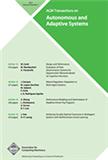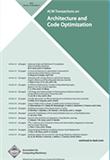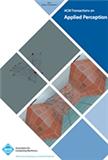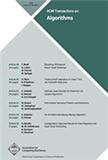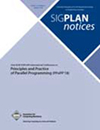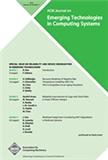PHILOSOPHICAL MAGAZINE
SCI/SCIE
- 雜志名稱:哲學雜志
- 簡稱:PHILOS MAG
- 期刊ISSN:1478-6435
- 大類研究方向:工程技術
- 影響因子:1.855
- 數據庫類型:SCI/SCIE
- 是否OA:No
- 出版地:ENGLAND
- 年文章數:193
- 小類研究方向:工程技術-材料科學:綜合
- 審稿速度:一般,3-6周
- 平均錄用比例:較易
官方網站:http://www.tandfonline.com/loi/.U3xqCD-Sx24
投稿網址:http://mc.manuscriptcentral.com/pm-pml
PHILOSOPHICAL MAGAZINE
英文簡介The Editors of Philosophical Magazine consider for publication contributions describing original experimental and theoretical results, computational simulations and concepts relating to the structure and properties of condensed matter. The submission of papers on novel measurements, phases, phenomena, and new types of material is encouraged.Part A (Materials Science) carries papers where, in general, the phenomena and interpretation are on a microscopic or atomic scale, for example physical, mechanical and defect-related properties studied by techniques such as electron microscopy, indentation, differential scanning calorimetry and infrared spectroscopy.Part B (Condensed Matter Physics) carries papers where, in general, the phenomena and interpretation are on an electronic scale, for example optical and electrical properties studied by techniques such as electrical conductivity, magnetic susceptibility, nuclear magnetic resonance and photoemission spectroscopy.The above division is not binding and papers on quantum-related phenomena, even if on the atomic scale, are more likely to be classed as 'physics' and be published in Part B, whereas papers reporting optical measurements to characterize the behaviour of, say, glassy alloys as a function of composition will be considered as ‘materials science’ and appear in Part A.Philosophical Magazine Letters is the rapid communications part of Philosophical Magazine and publishes short and timely contributions in the same fields.Manuscripts are considered on the strict condition that they have been submitted only to Philosophical Magazine , that they have not been published already, and that they are not under consideration for publication elsewhere.Contributions to Philosophical Magazine must report original research and will be subjected to review by referees at the discretion of the Editors.By submitting a manuscript to Philosophical Magazine authors are agreeing that CrossCheck software may be used to screen their work for unoriginal material.All peer review is single blind, and submission is online via ScholarOne Manuscripts.Physicists, materials scientists, and physical chemists within universities and research institutes.
PHILOSOPHICAL MAGAZINE
中文簡介哲學雜志的編輯考慮發表文章,描述原始的實驗和理論結果,計算模擬和有關凝聚態結構和性質的概念。鼓勵提交關于新測量、相位、現象和新材料類型的論文。A部分(材料科學)的論文一般都是在微觀或原子尺度上對現象和解釋進行研究的,例如通過電子顯微鏡、壓痕、差示掃描量熱法和紅外光譜等技術研究的物理、機械和缺陷相關特性。B部分(凝聚態物理學)載有論文,一般來說,這些現象和解釋是在電子尺度上進行的,例如通過電導率、磁化率、核磁共振和光發射光譜等技術研究的光學和電學性質。上述劃分不具有約束力,關于量子相關現象的論文,即使是在原子尺度上,也更有可能被歸類為“物理學”,并在B部分發表,而報告光學測量特性的論文(例如,玻璃態合金作為成分的函數)將被視為“材料科學”,并出現在a部分。《哲學雜志通訊》是哲學雜志的快速傳播部分,在同一領域發表短而及時的文章。手稿被認為是在嚴格的條件下,他們只提交給哲學雜志,他們還沒有出版,他們沒有考慮在其他地方出版。哲學雜志的稿件必須是原創的研究報告,并將接受審稿人員的自由裁量權。通過向哲學雜志提交一份手稿,作者們同意交叉檢驗軟件可以用于篩選他們的作品中非原創的材料。所有的同行評審都是單盲的,通過ScholarOne手稿在線提交。大學和研究機構的物理學家、材料科學家和物理化學家。
精選同類領域期刊,熱門推薦輕松get~
-
- ACM Transactions on Autonomous and Adaptive Systems
- 期刊ISSN:1556-4665
- 大類研究方向:工程技術
- 影響因子:
- 數據庫類型:SCIE
- 咨詢投稿
-
- ACM Transactions on Architecture and Code Optimization
- 期刊ISSN:1544-3566
- 大類研究方向:工程技術
- 影響因子:1.444
- 數據庫類型:SCIE
- 咨詢投稿
-
- ACM Transactions on Applied Perception
- 期刊ISSN:1544-3558
- 大類研究方向:工程技術
- 影響因子:
- 數據庫類型:SCIE
- 咨詢投稿
-
- ACM Transactions on Algorithms
- 期刊ISSN:1549-6325
- 大類研究方向:工程技術
- 影響因子:
- 數據庫類型:SCIE
- 咨詢投稿
-
- ACM SIGPLAN NOTICES
- 期刊ISSN:0362-1340
- 大類研究方向:工程技術
- 影響因子:
- 數據庫類型:
- 咨詢投稿
-
- ACM Journal on Emerging Technologies in Computing Systems
- 期刊ISSN:1550-4832
- 大類研究方向:工程技術
- 影響因子:2.013
- 數據庫類型:SCIE
- 咨詢投稿
精選常見問題,答疑解惑輕松get~
- 三篇ssci論文怎么同時投出去
- 中文核心和sci哪個影響力更大
- 中科院一區和JCR一區期刊占比區別
- 發ssci如何快速找合適的期刊
- 資源保護方面論文投sci指導
- 外貿行業論文發ssci周期長嗎
- 國外的sci投到錄用一般多久
- ssci期刊國內認可度
- 核能應用論文翻譯英文發sci容易的方法
- 人口老齡化研究論文符合ssci領域嗎
- sci開源和不開源分別是什么意思?有什么影響?
- ssci發表是高水平學術論文嗎
- 生態修復主題英文論文會收錄哪些數據庫
- 哲學專業論文發英文期刊
- 中科院sci四個區的劃分
- ssci期刊和sci期刊的區別
- ESCI和SCIE要分清
- ssci送審論文多久出結果
- ssci論文二作有用嗎
- 水土保持類英文期刊好選嗎
- ssci期刊論文一定會檢索嗎
 投稿咨詢
投稿咨詢

